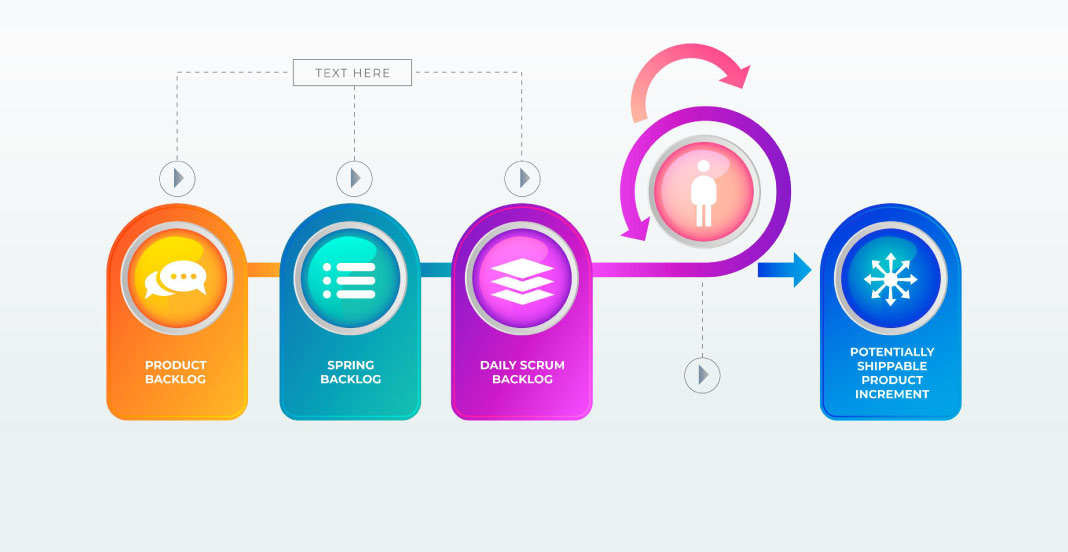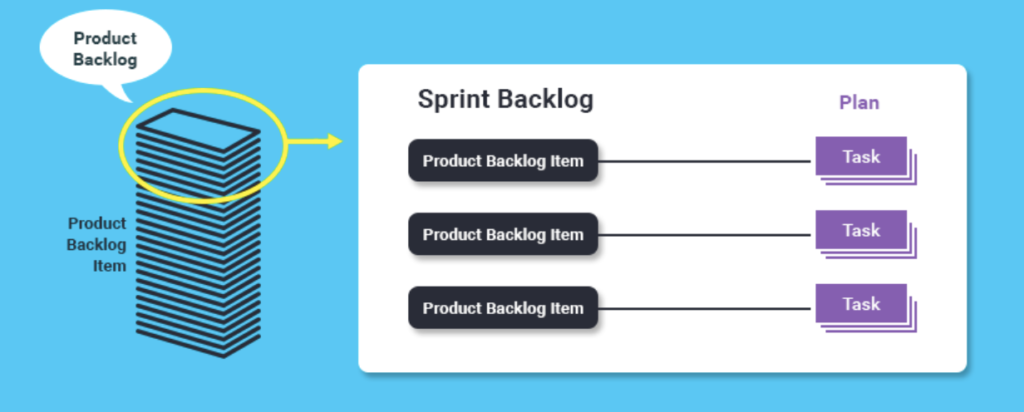We often come across the term “Artifacts” in the Agile software development methodology, especially in Scrum. So what are Scrum Artifacts and what role do they play? All will be explained below!
What are Scrum Artifacts?
- Scrum is a general work organization framework that aims to develop complex products, mainly software.
- Artifact refers to everything created for software development, such as diagrams, documentation, and code setups.
Therefore, Scrum Artifacts represent the work or values – used by the Scrum team and stakeholders to describe a product being developed.

3 important artifacts in Scrum:
There are 3 important artifacts in Scrum, including Product Backlog, Sprint Backlog, and Increment. Each artifact has its own commitment to ensure information delivery, improve transparency, and focus on progress measurement. Specifically:
- Product Backlog: committed to the Product Goal
- Sprint Backlog: committed to the Sprint Goal
- Increment: committed to the Definition of Done.
Characteristics and functions of creators in Scrum
Product Backlog
Product Backlog is where all the required features for a product are stored. These features are prioritized and managed by the Product Owner (PO).
Through the division of items in the Product Backlog, the current and future direction of the product will be clearly demonstrated. This will also help the Scrum team to more easily select items to be put into production in a logical sequence
Sprint Backlog

From the prioritized list of Product Backlog, the Scrum Team can predict which Product Backlog Items (PBIs) will be built and brought to the market in the next Sprint. This action is called building the Sprint Backlog.
The Sprint Backlog includes a plan and a list of tasks that need to be done to complete the Product Increment and satisfy the Sprint Goal.
Increment – Growth Part
The Product Increment is the sum of all completed Product Backlog Items in the Sprint, plus the values of the product completed in previous Sprints. Each Increment is a solid step towards the Product Goal.
The Product Increment plays an important role in connecting with users. Because it is a usable product, ready to be delivered to users. Through regular product delivery and listening to feedback from users, the Product Owner can analyze, refine, and optimize product value.
Why is Scrum Artifacts important?
Scrum Artifacts provide important information for the Scrum team. They serve as a foundation to help the team better position the project and make planning, progress estimation, and project success monitoring more convenient.
Below are some benefits of Scrum Artifacts:
- Help team members understand their tasks, roles, expectations, and project goals.
- Increase productivity by encouraging continuous collaboration through discussions on various topics such as product, Sprint goals, and backlog items.
- Set goals for each stage of product development.
- Create visual representations to help the Scrum team understand overall productivity using charts and graphs.
- Assist with time management and tracking of completed tasks as well as future tasks in the plan.
- Flexible in adjusting the project and optimizing product value.
With the above benefits, from leading technology corporations to “big players” in the banking and finance sectors such as Google, HSBC, Deloitte, Amazon… all apply Scrum Artifacts to their work processes. In addition, according to the Scrum Master Trends Report 2019, only 33% of survey participants work in a Scrum environment in software and internet businesses, with the remainder evenly distributed among the finance and insurance, consulting services, technology-engineering, and healthcare fields. This shows that more and more businesses and sectors are interested in Scrum.
